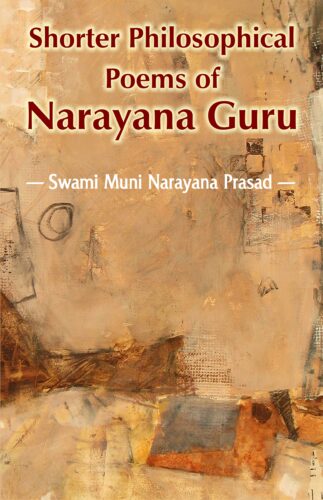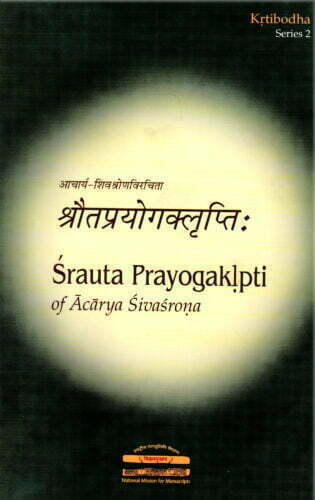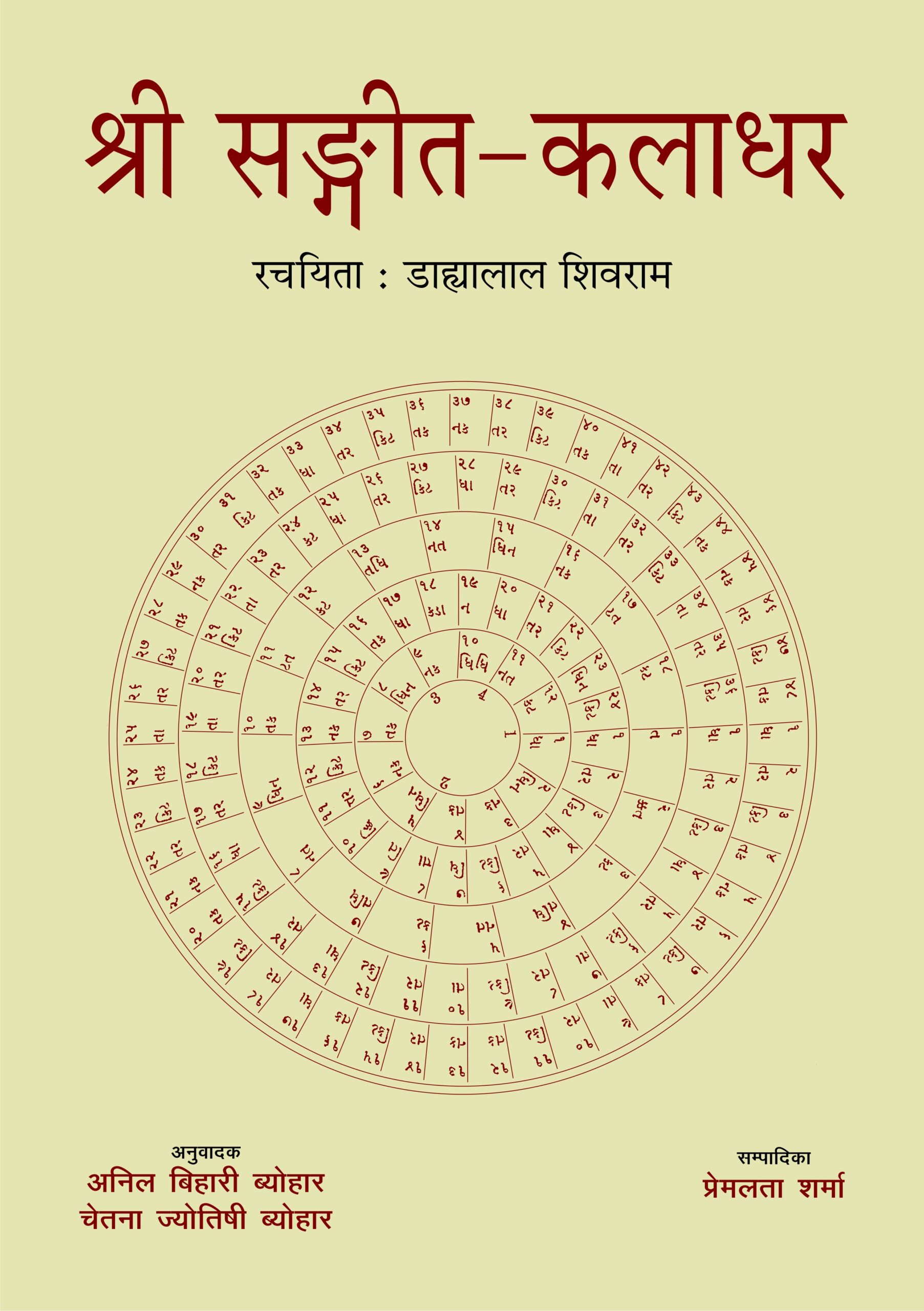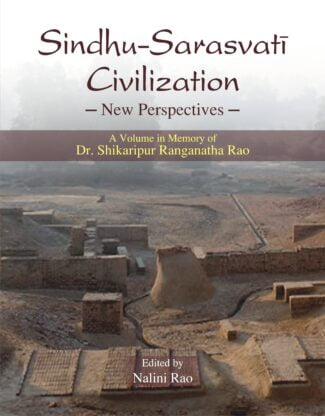Showing 881–890 of 1163 results

This book contains extensive commentaries on Narayana Guru’s five shorter philosophical poems The Science of the Absolute in Five Verses, Lamp of Non-duality, Consciousness, Chants for Oblations in Fire, and Ten Verses Addressed to God: A Universal Prayer. The poems elucidate the Vedàntic doctrine in terms of causality and the idea of Reality or atma being Consciousness in essential content.
The work collects Narayana Gurus most important shorter philosophic poems into one volume. They are respectively, the Brahmavidya Pancakam (Science of the Absolute), Advaita Dipika (Lamp of Non-Duality), Arivu (Consciousness Examined), Homa Mantram (Fire Oblation) and Daiva Dashakam (Ten Verses Addressing God). The verses are rendered into English and commented upon extensively by Swami Muni Narayana Prasad. Alongside the Gurus Atmopadesha Shatakam (One Hundred Verses of Self-Instruction) and the Darshana Mala (Garland of Visions), these poems are intended to transmit the wisdom of the Upanishads to the earnest seeker of the modern age. As a rishi of the modern age, Narayana Guru deals with issues pertinent today, including how social ethics and other contemporary problems are to be treated in light of the Absolute. As such, the Gurus poems may be said to be both ancient and modern at the same time.
Each poem contained in this book may be said to deal with a specific philosophical problem or a set of problems that may be encountered in the search for the Absolute. Each problem is consistently answered in light of the Absolute. Such elucidations include the prerequisites of both a true seeker and a true guru, the nature of the rapport to be established between each, and how the Absolute is sat, cit and ananda together. Other elucidations include the ultimate nature of Reality examined in terms of Consciousness, how Vedic ritual may be understood properly so that it may lead one to the highest realm of non-dual wisdom, and how to pray to God in the Absolutist sense.

The book is a Shrauta-Prayoga text, which deals with the sequence and procedures of the Shrauta- sacrifices. It also explains many technical ritualistic terms in accordance with their usage in Vadhula-tradition, focusing on the performance of the rituals with accuracy.
The Prayogaklpti, as its nomenclature indicates, is a Shrauta-Prayoga-text, dealing with the sequence and procedures of the Shrauta-sacrifices, viz. Agnyadheya, Darshapurnamasyeshti, Chaturmasya, Pashubandha, Jyotishtoma and Agnishtoma in six Prapathakas respectively, as prevalent in the Vadhula tradition. The author of the text is Acarya Shivashrona, a versatile exponent of the Shrauta tradition. At places he explains many technical ritualistic terms in accordance with their usage in the Vadhula tradition. He gives very much stress on the performance of the rituals with accuracy in accordance with the Vadhula tradition, after having consultation with experts in this matter. He often quotes the views of other Acharyas not by names but using the phrases like iti kecit, ityanye, ityeke, and so on.
This text has been edited for the first time on the basis of three MSS deposited in the Government Oriental Manuscript Library, Chennai; Adyar Library, Chennai; and Oriental Institute, M.S. University, Baroda, by an eminent Vedic Scholar like Prof. B.B. Chaubey who has already edited many other texts of this tradition like Vadhula-Shrautasutra, Vadhula-Anvakhyana, Vadhula Kalpagamavrttirahasya, Vadhµla-Yajnaprayashcitta, Vadhula-Smriti and also the Ashvalayana Samhita of the Rigveda for the first time.
The text is appended with three important indexes, viz. glossary of technical terms, mantras quoted in the text, and complete word-index.

Invoking Lord Hanumana for his blessings for the sake of knowledge, strength and wisdom in general and for the mitigation of difficult situations in particular, is a common practice among devout Hindus. As per belief and practice the solution lies in the recital of Hanuman Chalisa.
The Small, hard-bound hand-book, running into 64 pages, reproduces each and every stanza of the Hanuman Chalisa in original, with easy-to-understand Hindi translation. What is outstanding about the publication are the colourful, full-page visuals (artworks) depicting the super-mundane, mythological episodes related to the Mahabali, Veer Hanumana as the saviour and the ever-dependable Lord of the true devotees.
Invoking Lord Hanumana for his blessings for the sake of knowledge, strength and wisdom in general and for the mitigation of difficult situations in particular, is a common practice among devout Hindus. As per belief and practice the solution lies in the recital of Hanuman Chalisa.
The Small, hard-bound hand-book, running into 64 pages, reproduces each and every stanza of the Hanuman Chalisa in original, with easy-to-understand Hindi translation. What is outstanding about the publication are the colourful, full-page visuals (artworks) depicting the super-mundane, mythological episodes related to the Mahabali, Veer Hanumana as the saviour and the ever-dependable Lord of the true devotees.

For hundreds of years the devout Hindus have been invoking Lord Hanumana for his blessings by reciting Hanuman Chalisa for overcoming difficulties and diverse situations as also for strength, knowledge and wisdom.
This unique hard-bound beutifully illustrated booklet ‘Hanuman Chalisa’ offers readers the original couplets with transcription and translation into easy to understand English and Hindi. An unusual feature of the 112 page booket are the full-page colourful visuals (artworks) on almost every alternate page depicting various famous episodes of the evil-fighting, devotee-loving Lord Hanumana.
For hundreds of years the devout Hindus have been invoking Lord Hanumana for his blessings by reciting Hanuman Chalisa for overcoming difficulties and diverse situations as also for strength, knowledge and wisdom.
This unique hard-bound beutifully illustrated booklet ‘Hanuman Chalisa’ offers readers the original couplets with transcription and translation into easy to understand English and Hindi. An unusual feature of the 112 page booket are the full-page colourful visuals (artworks) on almost every alternate page depicting various famous episodes of the evil-fighting, devotee-loving Lord Hanumana.

This book was written by an unusual royal court poet of Bhavanagar (Gujarat) between 1885 and 1900. It benefits those readers, music lovers and singers who are interested in having knowledge of our ancient musicology. This book tries to project the style and suras prevalent from ancient to the modern times, and is a very useful guide for the music critics.
This book was written by an unusual royal court poet of Bhavanagar (Gujarat) between 1885 and 1900. It benefits those readers, music lovers and singers who are interested in having knowledge of our ancient musicology. This book tries to project the style and suras prevalent from ancient to the modern times, and is a very useful guide for the music critics.

Suparnadhyaya is a later Vedic versified short play portraying the story of the incredible dexterity and strength of Garuda and his wondrous deed of bringing soma (amrita), from Indras heaven for the sake of Snakes, after defeating Indras guards and ridiculing his divine weapon.
The experiences and knowledge from our past are recorded in manuscripts which have been handed down to us over several thousand years. The Government of India, through the Department of Culture, took note of the importance of this vast tangible heritage and, in order to preserve and conserve as well as to make access to this wealth easy, established the National Mission for Manuscripts (NMM). In order to disseminate the knowledge content of manuscripts, the Mission has taken up several programmes such as lectures, seminars and workshops. The Mission has published the proceedings of the above-said programmes under the following series: Samrakshika (on conservation), Tattvabodha (comprising lectures based on manuscripts delivered by eminent scholars), Samikshika (research-oriented papers presented in the seminars), and Kritibodha (transcribed and edited texts prepared at advanced level manuscriptology workshops conducted by NMM.
NMM has taken up a project for publishing rare and unpublished manuscripts in three formats (a) Facsimile, (b) Critical edition with annotation and (c) Critical edition with translation. This series has been named as Prakashika. Suparnadhyaya critically edited by Prof. G.C. Tripathi comes under this Prakashika series.
Suparnadhyaya, Suparnadhyanam or simply Sauparnam is a later Vedic text of Indian dramatic tradition, lesser known to scholars primarily due to the fact that it was never translated into English language. This play, normally enacted during the festival of Indradhvaja, has a plot which is woven around the story of the incredible dexterity and strength of Garuda and his wondrous deed of bringing soma (amrita) from Indras heaven for the sake of Snakes, after defeating Indras guards and ridiculing his divine weapon. This story finds a mention even in Mahabharata. This short play is in a metrical form, interspersed with occasional prose-pieces.
This text has come down to us in an incorrect form due to faulty manuscript tradition. In this volume, the author has tried to restore the text with the help of higher textual criticism and has given due justification for his amendments. It presents the text with English and Hindi translations for the benefit of those readers who are not conversant with Sanskrit.

How many of us know about the persons involved in pulling down the controversial structure the Babari Masjid in Ayodhaya? What is the importance of Ram janmabhoomi? Was the Babari structure built on the portions of Ram Mandir? All this and much more in a QuestionAnswer form, based on ground realities, presented in this book.
How many of us know about the persons involved in pulling down the controversial structure the Babari Masjid in Ayodhaya? What is the importance of Ram janmabhoomi? Was the Babari structure built on the portions of Ram Mandir? All this and much more in a QuestionAnswer form, based on ground realities, presented in this book.

The volume aims at sharpening the skills of translating the Sanskrit philosophical texts so as to retain fundamental concreteness, basic dynamics and original flavour. The volume particularly highlights the use and significance of prefixes in the backdrop of leading Indian philosophical texts.
This volume attempts to present a dynamic approach to translating Sanskrit philosophical texts while emphasizing on keeping certain principles in mind when rendering Sanskrit philosophical texts such as: the fundamental concreteness, the basic dynamics, the resultant ambiguity and the necessary congruence of the term in question with the specific context in which it is introduced. In this context, it particularly throws light on the use and significance of prefixes, particularly of propositions used as prefixes, in Sanskrit philosophical terminology. It also examines the basic problem in dealing with prefixes; their relation to the verbal roots to which they are attached. It studies the philosophical texts of various leading schools and systems including Vedanta, Mimamsa, Samkhya, Yoga, Nyaya, Vaisesika, Buddhism and Jainism, to examine the compound-terms in them and the mental operations which are grammatically and philosophically expressed. Study of the variation of terms brought about by the application of prefixes is intended. It argues that the prefixes throw into relief, by the different modes of their application, the specific bent of the systems themselves. They have retained the motional and emotional significance, which they apparently once had, at the earliest stage. The book also takes up some vital questions, such as, whether the prefix or the noun is the essential bearer of the meaning.
The volume is a well-researched study of the use of language in Sanskrit philosophical texts. It will prove useful to scholars and students of Indology, particularly those concerned with Sanskrit language and philosophy.

In this book eminent archaeologists, philologists, anthropologists and historians re-examine recent research and existing theories upon the nature of the interrelation between the two most ancient prehistoric cultures of the South Asian subcontinent: the Indus (Sindhu) or Harappan Civilization and the Vedic Civilization.
SindhuSarasvati Civilization: New Perspectives. A Volume in Memory of Dr Shikaripur Ranganatha Rao is a compilation of the papers presented at the International Conference on the SindhuSarasvati Civilization: A Reappraisal held in Loyola Marymount University, Los Angeles, during 21-22 February 2009. Here, eminent archaeologists, philologists, anthropologists and historians re-examine recent researches and existing theories upon the nature of the interrelation between the two most ancient prehistoric cultures of the South Asian subcontinent: the Indus (Sindhu or Harappan Civilization) and the Vedic Civilization. The scholars touch upon areas of consensus and contentions, with a tentatively conclusive interdisciplinary understanding about the pluralistic culture and shared identity of the two riverine cultures between 3000 and 1500 bce.
They rightly swing the balance of the argument away from the archaic and now exploded Aryan Invasion Theory to the well-grounded Vedic Sarasvati milieu as the home of the Harappan Civilization. Thus it opens a new window to the cultural content of the prehistoric period of the subcontinent.
The eminent personalities that have contributed include Ashok Aklujkar, Shiva G. Bajpai, Giacomo Benedetti, R.S. Bisht, Edwin Bryant, Michel Danino, Subhash Kak, Robin Bradley Kar, Nicholas Kazanas, Mark Jonathan Kenoyer, Prem Kishore Saint, Jim J. Shaffer, Diane A. Lichtenstein, Shrikant Talageri, Lavanya Vamsani as well as Sundara Adiga, S.R. Rao, and Nalini Rao.
This volume is poised to evoke keen interest among archaeologists, researchers, historians and students of history and archaeology.

The book conveys the basic principles and allied information on sitar and its music, and vividly deals with gharana, especially its contribution to the existing and traditional Indian classical music, conveying the instrumental aspect of Indian music in relation to sitar playing along with other main musical aspects such as ragas, tals and Senia gharana.
Sitar and Its Music is a revised and enlarged edition of a much sought-after reference book on instrumental music, appeared as Sitar and Its Techniques, in 1981. It is a serious attempt to convey the basic principles and allied information on sitar and its music, keeping in mind its absolute usefulness for the students who want to learn sitar and our great tradition.
The book vividly deals with gharana, especially its contribution to the existing and traditional Indian classical music. It conveys the instrumental aspect of Indian music in relation to sitar playing, largely benefitting the students of music, especially that of sitar. It also brilliantly covers other main aspects of music such as ragas, tals and gharana. The book is a blend of theory and practice, and an attraction to those who are about to step into the magnificent world of sitar. Its text is easy to read, language is simple, and explanation is elegant.
This book will be a great asset for every student of Indian music and those who plan to learn and know about sitar and classical music, explaining its theoretical and practical aspects.
| There are no products |